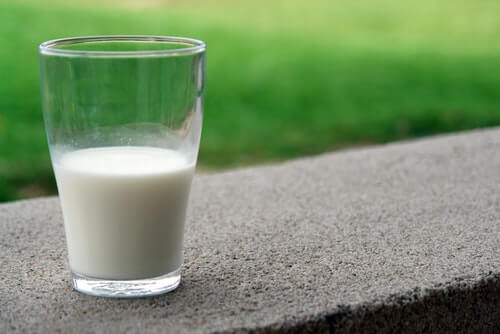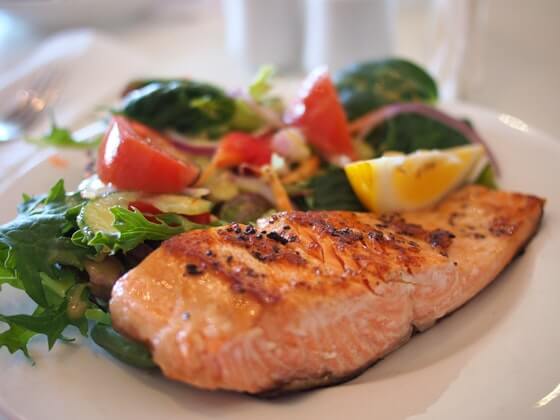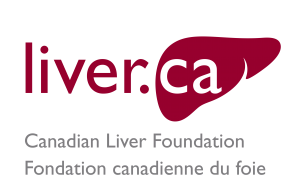Canada’s Food Guide and Your Liver Health

Canada’s Food Guide and Your Liver Health
On January 22, 2019, Health Canada released an update to Canada’s Food Guide. This is exciting news for Canadians. Several changes to the Guide’s layout and content have been done to ensure that Canadians are provided with up-to-date and evidence-based nutritional information. Emerging as important concepts within the new food Guidelines are a renewed focus on plant-based foods, lower intakes of processed foods that contain higher levels of sugar, a background on saturated fat intake, and a less direct emphasis on dairy products.

What does this mean for Canadians living with liver disease?
Moderation of saturated fat and simple sugar intake are all known risk factors for the development of a fatty liver and thus, significant regarding non-alcoholic fatty liver disease. Therefore, this message makes a lot of sense for Canadians with liver disease as high intakes of sugar (fructose) sweetened beverages and fatty foods high in saturated fat has been associated with an increased risk for developing a fatty liver.
A second crucial point is increasing our fresh fruit and vegetable intake. This is incredibly important to ensure that Canadians with liver disease meet their daily needs for vitamins (e.g. vitamin E). Fruits and vegetables are high in antioxidants, which are also vital for overall liver health.

The Guide offers some easy and practical tips (such as filling up half your plate with a variety of fruits and vegetables) to increase your intake. It also provides some handy tips for snacks and meals that will assist Canadians in eating a wide range of fruits and vegetables. All of this is good news for maintaining overall liver health.
One of the areas of concern in the new Guide is the de-emphasis of dairy intake. Although the Guide includes the recommendation for Canadians to consume low-fat dairy products, there is less information on how much milk and other dairy alternatives Canadians should consume daily. This is concerning since vitamin D fortified dairy products are an important source of vitamin D, protein, calcium and other micronutrients in the Canadian diet. These nutrients are particularly vital for the optimal growth and development of children and adolescents and for preserving healthy bones and muscle in ageing adults.

Vitamin D is also an essential nutrient for overall health, and as such, it is critical for Canadians living with liver disease to include vitamin D fortified foods in their diet. Consuming vitamin D fortified dairy products, and vitamin D fortified plant-based foods will be a crucial strategy that Canadians can employ to ensure their vitamin D needs are met. This will be very important to promote liver health and healthy body weights.
The new Food Guide also addresses concerns related to alcohol consumption and how this may impact the overall health of Canadians. This is highly relevant to Canadians with liver disease where caution should be considered.
Although Health Canada’s Food Guide is restricted to diet, the Canadian Liver Foundation emphasizes that regular exercise and physical activity are essential components of the maintenance of good liver health and will enhance the benefits of a healthy diet.

Another update of the Guide is expected to become available to the Canadian public later in 2019. This Guide is simply the first step to promoting the nutritional health and well-being of Canadians. A remaining challenge will be to develop nutritional guidelines that meet the needs of Canadians with liver disease. Dietitians are a unique resource to assist with this and are uniquely positioned to help Canadians translate the information presented in the new Guide to meet the needs of Canadians with liver disease.
For more resources or guidelines on how to follow a liver healthy lifestyle, please contact our support services at 1 (800) 563-5483 Monday to Friday from 9 AM to 5 PM EST, or email clf@liver.ca



I caught acute Hepatitis so what kind of foods can I eat. It’s been 3 months but it still hurts in esophagus area..
ok eating salads and fruit and oatmeal soups water, tea, coffee ☕️ . Told ok to eat and daughter in law mAde sloppy Joes. For 3 days Ive had a pain in liver or heart burn blah
Hi Rosie, we’re sorry to hear about your troubles finding a safe diet. We recommend giving our National Support Line a call toll-free at 1 (800) 563-5483 where they can help you find some resources that work for you, and discuss how to speak with your doctor about your ongoing dietary issues. Thank you!
Un petit questionnement. J’ai été dignostiqueé il y a environ 4 ans d’une stéatose. Je ne sais pas laquelle. Alcoolique ou sans alcool. Depuis j’ai carrément cessé la consommation d’alcool ce qui m’a fait perdre du poids et continué du vélo et du tapais pour mes 72 ans. On m’a prescrit de la vitamine D depuis plusieurs années 10,000 UI 1 fois par semaine. Cette semaine on vient de me prescrire un changement à ce niveau. Maintenant ce sera tous les jours à 2,000UI par jour. Ma question qu’est ce qui fait changer cela et cette augmentation en 2019 pourrait-elle avoir des incidences négatives sur ma stéatose ? Ma pilule pour la pression a été arrêté à cause de mes changements et ma pilule statine 5mg est en évalustion pour la retiré. J’avais lu qu’un surdose pourrait affecter les reins. J’ai un kiss sur un rein de 17mm. Alors, vitamine D changement et incidence possible sur moi ? Ais je raison de m’inquiéter un peu de demander des changements. Merci
Bonjour Roland,
Merci pour votre question. La Fondation canadienne du foie est un organisme non médical dévoué au financement de la recherche sur le foie qui sauve des vies et à l’éducation en matière de santé du foie. Malheureusement, cela signifie que nous ne sommes pas en mesure de fournir un avis médical. Nous vous suggérons d’informer votre médecin de ces préoccupations importantes, qui pourrait vous guider. Si vous n’avez pas de médecin de famille, veuillez nous contacter au 1 (800) 563-5483 du lundi au vendredi, de 9 h à 17 h, heure de l’est, ou par courriel à clf@liver.ca. Notre équipe vous aidera à en trouver un dans vos communauté.
Merci.
Quelle vitamine es bonne pour le foie et fruit
If someone has mild chirossis and they stop pain meds and alchol am eat helathy can they still live a long life
Thanks for your question, Angela. There is ongoing, active research on cirrhosis and fatty liver disease that suggests fat, inflammation and scar tissue in your liver can be reduced. This is possible when people lose weight and/or modify their lifestyle. Lifestyle modification includes adopting a healthy diet as well as increasing physical activity. Generally speaking, losing about 10% of your total body weight can help decrease your liver fat and inflammation substantially. For a comprehensive guide on nutrition and cirrhosis, please visit: https://bit.ly/2Iy4omP
Please note that when it comes to cirrhosis, it is important to identify and tackle the underlying causes of your diagnosis. To do this, we recommend speaking with your doctor for tailored guidance. He or she will be able to provide you with more info based on your personal medical history and other variables.
Is butter harmful to severe cirrhosis patients?
Generally speaking, moderate butter intake is not harmful to patients with mild liver disease, however when someone with advanced cirrhosis (decompensated) has already raised levels of fat in the blood; it is sometimes advised they reduce the intake of certain fats and replace with healthier fat options. If you were to choose, opt for unsalted butter or consider using olive and avocado oil alternatives. Please speak with your health care provider and/or registered dietitian or check out our Nutrition in Cirrhosis guide (https://www.liver.ca/wp-content/uploads/2018/06/99841_Nutrition_in_Cirrhosis_40pg_FINAL-2018-05-29.pdf) for more information.